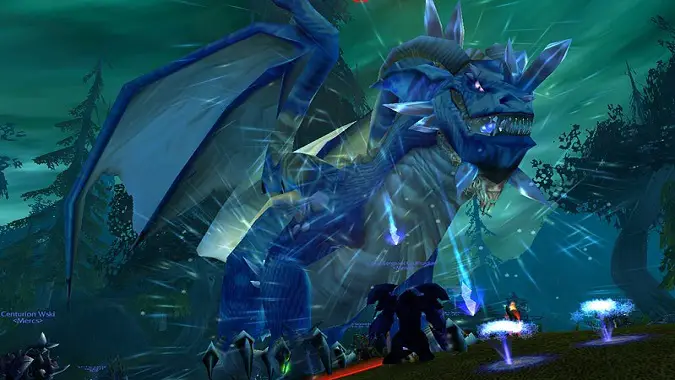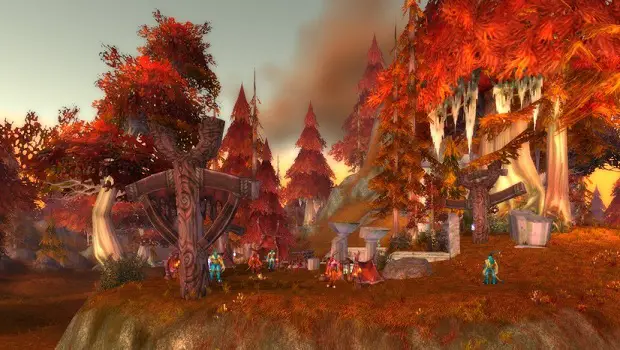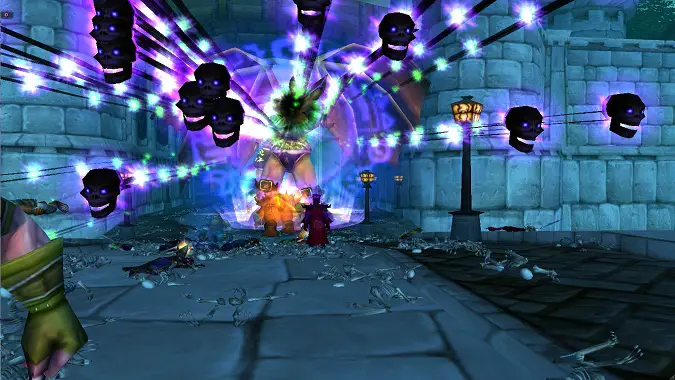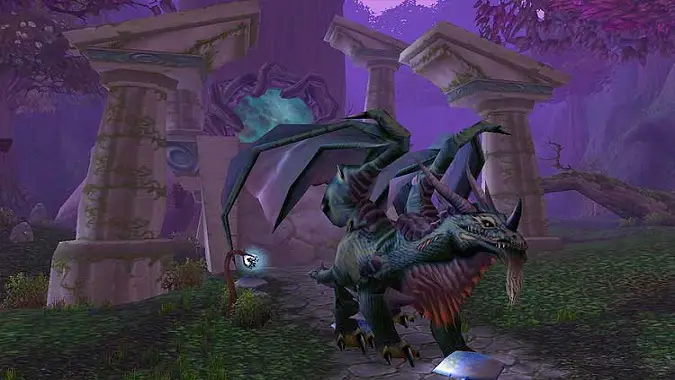WoW Archivist: Classic’s world bosses

Legion‘s demon invasions have given us the most world bosses the game has ever seen. Not since the Gates of Ahn’Qiraj opened up have we fought so many powerful enemies in the open world. The demons under Sargeras are deadly and potent. Leveling up my Goblin Rogue, I’ve spent a lot of time staring at grayscale versions of Azshara and The Barrens. It adds a lot of excitement (and stress) to what is essentially a “graveyard zerg” encounter when dying might mean missing out on 40,000 experience.
Classic gave us a number of world bosses, and believe it or not almost all of them are poised to make a return in Legion, as both friends and foes. Let’s look back!

Mature blue dragon
For many players in classic WoW, Azuregos was the first world boss they ever encountered — sometimes by accident, since he pathed around Azshara. Adventurers who weren’t careful found themselves chomped/frozen to death out of nowhere after Blizzard added him in patch 1.3.
Azuregos had a number of interesting abilities that made him a challenging encounter in the open world. To prevent “graveyard zerg” tactics, players killed by him received a debuff that froze them in ice for 15 minutes if they tried to attack him again. Without an enrage mechanic, the boss sometimes took 30 minutes to die in early classic, so you weren’t always completely out of the fight. He’d also teleport himself and nearby players by a short distance, dropping aggro completely for everyone within teleport range. He had a short-range mana burn aura that casters had to beware of and a spell reflection shield. He was immune to arcane and highly resistant to frost damage. It was a fun, hectic fight, if also painfully long.
Healers ran out of mana quite often against Azuregos. Guilds would send them out one by one to run away from the boss far enough that they dropped out of combat, so they could drink and restore their mana bar. On PVP realms, these healers often found themselves ganked if they didn’t have a DPS friend or two as an escort.
Like all world bosses in classic, Azuregos had a long respawn timer, and only one raid could tap and loot him. Not only did you have to fight the other faction for the right to his stuff, you had to fight other guilds within your own faction. Some guilds would set up characters in Azshara just to periodically log in and check for the boss. Guilds would also occasionally type a /who Azshara command. If they saw a lot of players from one guild in the zone, they knew that Azuregos was up. They’d gather and see if the other raid was going to wipe. Then they’d jump on the boss as soon as they could tag him. It was a far cry from the cooperative spirit of today’s world bosses and their generous personal loot system.
Azuregos dropped an important item for hunters, the Mature Blue Dragon Sinew. It was necessary to complete the Hunter-only Rhok’delar quest line. While he’s not a world boss any longer, Azuregos remains relevant in the game today. He made an appearance in a Cataclysm quest line and is poised to do so again for some of Legion‘s Artifact quests.

Kazzak is eternal
Kazzak was the other half of WoW‘s first two world bosses added in patch 1.3. He’s been a world boss in three eras of the game so far. Despite falling to pesky adventurers every time, he keeps getting a promotion. He began as Lord Kazzak in classic, upgraded to Doom Lord Kazzak in The Burning Crusade, and is now Supreme Lord Kazzak in Warlords of Draenor.
As with Azuregos, Blizzard was worried that it would be too easy to defeat Kazzak if players could just run back from the graveyard over and over again. In every incarnation, dying to Kazzak heals him. In classic, because of the stringent DPS requirements, dying after the first few seconds of the fight meant a raid wipe. You couldn’t use pets, totems, or anything that would count as a kill for him. Once you pulled Kazzak, you had 3 minutes to kill him before he went into Supreme Mode and spammed Shadowbolt AOE for crazy damage on the entire raid. Like many bosses in classic, beating him called for furiously dispelling debuffs, leading to the rise of “de-cursing” addons such as Decursive.
Skilled and mischievous players occasionally took Kazzak on a road trip from the Blasted Lands to Stormwind. Blizzard didn’t have strict leash rules on mobs, so as long as you stayed in combat with Kazzak through ranged abilities, you could kite him anywhere. Because Kazzak gained power from each player killed, the demon became nigh-unstoppable in a heavily populated area like Stormwind. GMs sometimes had to intervene. Lord Kazzak dropped The Eye of Shadow in classic, part of the Priest quest line for the Benediction/Anathema staff.

The nightmare before Silithus
Released about three months prior to the Gates of Ahn’Qiraj event, patch 1.8 was titled Dragons of Nightmare. Its main feature was four new world bosses: Emeriss, Lethon, Ysondre, and Taerar, spread out among four different zones in Kalimdor and Eastern Kingdoms. As corrupted lieutenants of Ysera, the four green dragons all shared similar abilities: a fog that would chase you and put you to sleep, along with #justdragonthings like a breath attack and a tail sweep. They also had a debuff that would sleep you if you tried to re-engage after dying to them. All four were completely immune to nature damage (RIP Rogues).
Each dragon also had unique abilities. Lethon could stun the entire raid for 5 seconds, which was often lethal to tanks who weren’t topped up. The spell summoned a spirit from each stunned player. The spirits walked toward Lethon and healed him for a huge amount if they reached him. Some players, of course, would try to screw up other guilds’ attempts by creating extra spirits where they weren’t expected.
Ysondre had a chain lightning spell that could chain up to 10 times, dealing increased damage with each jump. She also summoned “Demented Druid Spirits” to Moonfire-spam and silence raid members. Taerar had an AOE fear (that could send you into the sleep clouds) and summoned three dragon adds.
Emeriss featured a nasty DOT that required everyone possible to run 100 yards(!) out of range at certain points in the fight. Wowpedia makes note of a fun interaction where engineering’s Ultra-Flash Shadow Reflector could reflect this DOT back at Emeriss, killing the dragon with her own spell almost instantly. Blizzard obviously rushed to patch in a fix.
The dragons dropped a quest item that could be turned in for an epic ring with nature resistance. In fact, many of the items on their loot table (such as the Staff of Rampant Growth, aka the “corn cob staff”) featured nature resistance. This stat would become important to raiders in both the Temple of Ahn’Qiraj and classic’s original Naxxramas. Several encounters in these raids required high nature resistance to survive.
If you missed out on the Dragons of Nightmare in classic WoW, you’ll get the chance to face them very soon. We’ll confront them again in Legion‘s Emerald Nightmare raid.
Please consider supporting our Patreon!
Join the Discussion
Blizzard Watch is a safe space for all readers. By leaving comments on this site you agree to follow our commenting and community guidelines.
 @QuestVendor
@QuestVendor



